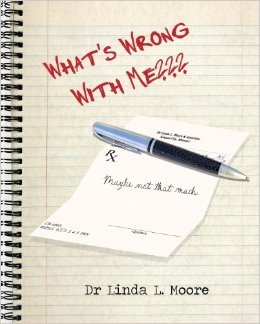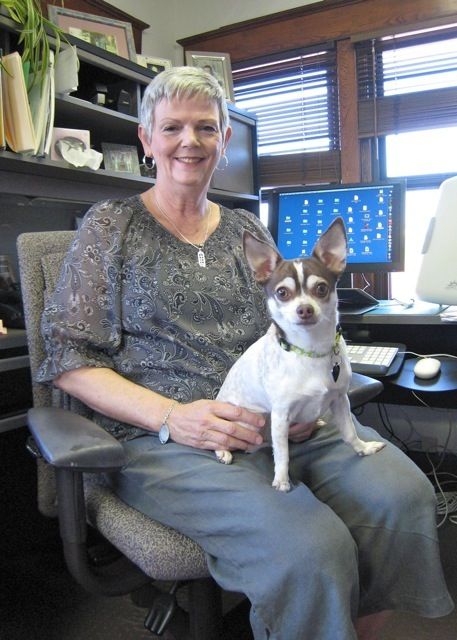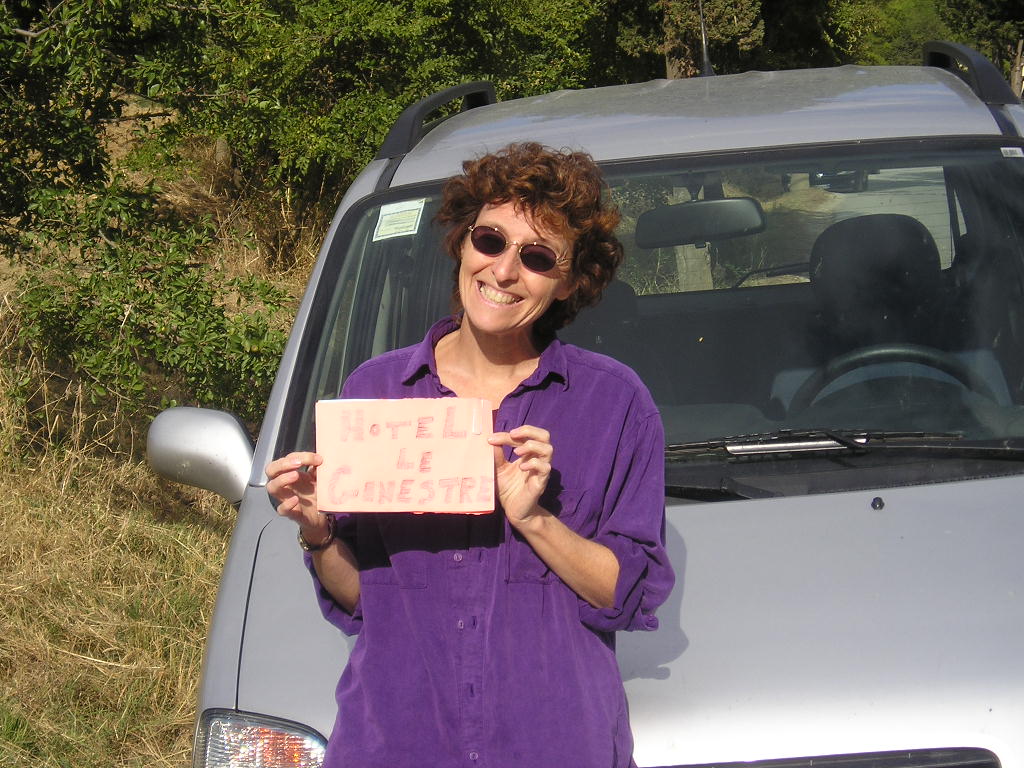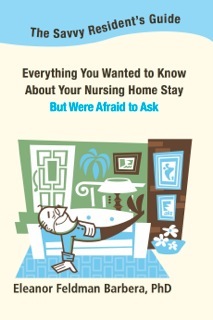Archive for October 2013
It Just Takes One Word to Make a Conversation: An Unexpected Halloween Treat
On my mother’s last Halloween, her memory care unit held a party. Pam, the nurse, brought a basket brimming with hats, shawls, and scarves. Pam set a floppy white hat on Mom’s silvery curls and draped a lacy purple shawl over her shoulders. In her new adornments, Mom looked both puzzled and happy.
But during the “treat” portion of the Halloween celebration, which featured M&M’s and chocolate chip cookies, Mom’s smile was unambiguous. All her life, Mom had adored sweets and her Alzheimer’s had not dimmed her enjoyment.
Then small children paraded through the facility, dressed as princesses, witches, super heroes, and ghosts. Volunteers handed the residents wrapped tootsie rolls.
“For the children,” they said.
Mom smiled at the adorable kitty cats and pirates who chanted “Trick or treat,” in wispy voices, but she did not relinquish her hold on the sweets; she did not share her candy.
“Mom, would you like to give the children some of your candy?” I asked as my mother gripped her treasure.
“No,” she said.
No. The word floated through my mind and I gazed at Mom, my mouth open, my mind euphoric. Perhaps I should have been chagrined at her selfishness but instead I was thrilled that she had actually responded to my question. It was the closest we’d come to conversation in weeks. I laughed with delight. Mom laughed.
For that moment, we were two women, simply laughing. For me, it was a most wondrous and unexpected treat.
Q 4 U:
Please share one of your unexpected treats.
Beware of Caregiver Breakdown: Three Warning Signs and Three Soothing Actions
My stomach hurt most of the time. As I dashed around the house, getting ready to go see Mom in the Memory Care Unit, I frequently bumped into furniture. I found myself drifting away during meetings and unable to concentrate when I sat at the computer to write. And even though I had wonderful, supportive friends, I often felt an aching loneliness. Later, I learned these were normal symptoms of caregiver’s fatigue.
I asked my friend Linda Moore, psychologist, community leader and author of the newly released book, “What’s Wrong with Me?” to tell me more about recognizing and managing such exhaustion. Here are some of her insights.
Three Areas Where Stress Screeches You to a Halt
Physical
“Your body is the early warning system,” Linda says. “But most people try to ignore the on-going tiredness, low energy, muscle spasms, unfamiliar aches and pains, and GI issues.”
Emotional
Often, after I’d spent hours solving problems around Mom’s care, I had a heavy feeling of disconnection and a dull anger. Nothing mattered and I felt sad, rootless and lonely. But I kept going. Caregivers tend to push past such feelings.
Behavioral
“Poor concentration is one common sign of stress,” Linda says. When friends say, “You’re just not acting like yourself,” it’s a cue to slow down and drink a cup of soothing tea, read a short magazine article, or phone a friend. Other stress symptoms include procrastination and isolating yourself.
Fight Breakdown with the MEE Plan
“Meditate, even if it’s just for a minute,” Linda advises.
Sit quietly, count to four as you breathe in and count to six as you breathe out. Watch your thoughts wiggle around. One minute of meditation calms you; five minutes energizes you and 20 minutes of daily meditation can really center you and give you a greater sense of well-being.
Exercise
“Everybody knows it works and no one wants to do it,” Linda says. Even when you’re so tuckered out that your fingernails feel heavy, movement matters. Five minutes just walking around the house or prancing around to “Dancing Queen” can ratchet up your energy. Fifteen minutes of walking can lift your mood. Even a jog up stairs or unloading the dishwasher can shift your energy.
Eat healthy.
Is a banana really as delicious as a dark chocolate truffle? Many would say no. But most would agree, the banana is better for you. Even if you often eat on the run, choose fruits and vegetables to snack on. Throw in salads, whole grains, soups and nuts. And don’t forget the truffle: be sure you indulge every so often in a comfort food you really adore.
Lastly, Linda advises, “Don’t give away your personal power: ask for help when appropriate and learn to say no.” #
Dr. Linda Moore is a psychologist, author, speaker and consultant in Kansas City. She specializes in the psychology of women, stress management and leadership. 

Q 4 U
I bump into furniture when I’m stressed. What are some of your stress signals?
*****
Creative Listening in the Land of Dementia: Three Innovative Ways to Enjoy Repetition in the Caregiver’s Journey
Pretend you are editing a story, acting in a play or practicing for a concert.
You go over the same material again and again, seeking nuances, sinking deeper into the art form, hoping to find additional meaning. You integrate the piece into your heart and mind.
Imagine what would happen if you could bring that same set of creative thinking to the story your memory-impaired father just told you for the 112th time!
Listen in a New Way
That was my task during a particularly repetitive period in my mother’s Alzheimer’s: learning to appreciate each telling of the same tale, knowing the story was an important part of Mom’s life and that later, the story might disappear.
My friends Meg and Jim helped me by saying, “We loved sitting by your mom and hearing her WWII stories. She was really courageous.”
I felt a flash of pride and a flush of shame; those were the very stories I was so weary of.
I decided to listen to her stories in a new way, seeing what I could learn about Mom from careful, loving listening. I challenged myself, asking these questions:
What does the story say about my mom?
As I listened anew to Mom’s story of serving as an Army nurse in Iceland, living in a Quonset hut and skiing over to nearby hot springs, I practiced seeing Mom as my friends had seen her—an adventurous, patriotic, curious, and caring person. I realized I had started taking these qualities for granted!
How can I use the story to build a conversation with Mom?
From studying creative people, I realized that embracing limitations can actually inspire creativity. “We need to first be limited in order to become limitless,” says artist Phil Hansen. Filmmaker Martin Villeneuve says, “If you treat the problems as possibilities, life will start to dance with you in the most amazing ways.”
There’s an art in coloring inside the box. I experimented:
How many times could I answer the same question in a different and interesting way?
How often could I ask a new question about a familiar story?
What unique comments might lead us to another conversation?
How can I use the story to connect Mom to others?
Sharing the story meant sharing the marvelous qualities of my mom and celebrating her rich history. I wrote down her oft-repeated story and sent it to my relatives. When friends asked me how Mom was doing, I told them and I added in the story. This widened and enriched our conversation, taking the focus away from Alzheimer’s and concentrating on my mom’s stellar qualities.
*****
Q4U
What is one of your signature stories?
Six Spiritual Practices For Living with a Diagnosis of Dementia
Normally, you can put my friend Vicki Stoecklin in any city and she will easily get her bearings. From Paris to Dubai to Marrakesh, Vicki is used to working in and making her way around foreign countries.
So, at age 58, when she started getting lost in her own city, she knew something was seriously wrong.
Vicki had been plagued with a series of chronic physical ailments and she figured she’d deal with whatever this new issue was.
But she was caught off when the neurologist said bluntly, “You have dementia.”
“What am I supposed to do?” Vicki said.
“Live your life,” he said.
Learning to Live with Dementia
Initially, ”living life” was a huge challenge. She had trouble remembering where she’d put things; her feelings were disoriented. She could no longer drive and or do simple math. Her vision played tricks on her: she saw black holes where there were none. And she felt isolated from her community and friends.
But Vicki had a wealth of inner strength and resources. When she told me about her spiritual practices, I was inspired and moved. Here are a few of the ideas she uses to center and care for herself.
Learning Self-Compassion
“I learned to have compassion for myself,” she says. “If I’m having a hard time concentrating on a book, I stop and do something comforting, instead of pushing myself.”
Using Family Treasures to Encourage Contemplation 
Vicki enjoys contemplating her grandmother’s hand made quilt, which hangs on the wall of Vicki’s meditation room. “She probably had Alzheimer’s when she stitched those squares together,” Vicki says.
Inviting out the Inner Artist
Vicki uses crayons, watercolors, and colored pencils to explore her own artistic process.
“My depth and visual perception is off, so my work is abstract,” she says. “I also find it meditative to color labyrinths and mazes.”
Opening the Heart to Spiritual Texts
Vicki has a number of trusted books she calls upon.
One favorite is Peace in the Storm: Daily Meditations and Prayers for Those Affected with Chronic Illness.
“This book has been a great support to me,” Vicki says. “It’s about finding your relationship with God during the challenges of ongoing illness.” Another book that spoke to Vicki was Proof Of Heaven by Eben Alexander, a neurosurgeon who writes about his near-death experience. She also frequently reads Psalms.
Praying With and For Others
Vicki has a small box that she puts little prayers in for her grandson and her daughter. She has become a chaplain at her church and often prays for others. She also finds comfort in using the 24-hour prayer service at Silent Unity
Documenting Her Life Story
She has created two memory books — one for her work and one for her life. “These books are also reminders of the many happy memories over my lifetime,” she says.
*****
Q 4 U
What are some ways you incorporate spirituality into your life?
If you’d like to contact Vicki, you may email her at Vicki vickiwhllg@aol.com
Hearing the Real Meaning: The First and Last Words
Several years ago, Ron and I went to Italy. Every night, I sat up late, taking notes in my travel journal.
Five nights into our trip, Ron asked, “What are you writing? Are you describing the churches we saw today, are you waxing lyrical about the vineyards and fields?”
“No, I’m making a vocabulary list.”
You see, before we left on our trip, we took 12 Italian lessons. I was keeping a list of words I had spoken or understood. I wanted to find out how much each word cost and if our Italian lessons had been worth it. In five days I had only used 50 words—each word from my lips costs more than a bottle of mineral water and less than a glass of wine. I realized I had to be increasingly outgoing if I wanted to make the most of my Italian. 
People’s faces lit up when I tried speaking their language, even when I asked something simple, like, “Where is the bathroom?” One dark evening when we were hopelessly lost, we stopped at the only establishment that was open on the narrow winding road: a bar. I walked in and asked, “Where am I?” in Italian. That one awkward, existential sentence resulted in a kind couple offering to drive ahead of us and lead us to our hotel.
By the end of our trip, I had used or understood 200 words and I had connected with many people. The cost was measurable—the results were priceless. 
Just like my first words of a new language offered me rich connections, my mother’s last words were deeply meaningful. I wrote about this in my story, Words, to the Wise.
Mom is in bed when I visit one afternoon, her eyes open, her hands twisting the blanket, like a kid who’s had enough of her nap. She smiles when I walk in.
“Hi, Mom, how are you?” I certainly expect no direct response from Mom, but the greeting makes me feel normal.
“How are,” she says and I feel a little thrill at this social nicety.
“I’m fine, Mom. How are you?”
“I know what you mean,” she says, staring out towards the hallway.
I am excited by Mom’s pointillistic little monologue. Alzheimer’s has erased most of Mom’s considerable vocabulary and this spill of words is a treat. As I stroke her arm and smile at her, I realize I am literally listening to my mother’s last words.
In the movies, the last words are profound gems of wisdom, uttered upon a deathbed. Those words are a raft to hang on to so you don’t drown with grief. Though my mother is lying in bed, she is definitely not dying. In fact, given her vast years and advanced Alzheimer’s, she’s relatively physically healthy.
“Well we item” Mom says. “All right”
She no longer needs a listener’s approval. She no longer checks for understanding. The words spill out, like the random winnings from a nickel slot machine.
“So, but that’s,” Mom says, as I touch her leg.
“Why.”
“Oh.”
Each word is an independent contractor, a one-act play. Mom’s words require interpretation, involvement, imagination and curiosity. Unlike last words in a deathbed scene, Mom’s words do not neatly sum up her life or her philosophy. Still, these words are gifts. Many visits have gone by with the barest scraps of language. I get out my pen and paper and write down every one of my mother’s last words.
As I write, I imagine she is giving me a secret code, sending me a message from the last cognitive bastion of her brain. “I don’t know. I paid. I’ll try.” What depth, what meaning, what spiritual significance these simple phrases might have!
*****
Q 4 U
Are there times when a few words have made a big difference?
Five Easy Ways to Put Your Heart on the Page: Finding Words for the Caregiver’s Journey
My mother’s Alzheimer’s drove me to write. My writing inspired me to speak.
Over the last years, I have received enormous pleasure from connecting with people all over the world, sharing the stories of finding hope in the caregiver’s journey.
It All Started with Grief
When I initially realized the depth of my mother’s memory loss, I was shattered with grief.
My initial reaction was:
Visit with mom
Drive home, blowing my nose and wiping tears from my cheeks
Misplace my car keys
Stare numbly into space
One day, during the “staring numbly” phase, my partner Ron said, “Are you writing down your feelings?” It was a smart and sensible thing to say; the sort of suggestion I might make to him in a crisis. I was, after all, a writer.
“I don’t feel like writing,” I said.
But his words stayed in my mind. The next day, I slightly altered my behavior:
Visit with mom
Drive home, blowing my nose and wiping tears from my cheeks
Misplace my car keys
Write numbly for an hour
Writing my Way from Grief to Insight
I poured out my fears, confusion, anger and grief. After doing this for a week,
I began noticing how fascinating my visits with Mom were; we were explorers on a wild inner trek.
I began documenting our time together, sometimes even taking notes during my visit. I wrote about the challenges, humor and blessings. I wrote about my conversations with my father, with friends and family and with the aides, the nurses, the social workers. As I wrote, I saw how much hope, promise and energy there was in my new world.
Instead of crying when I drove home, I thought about how I could transform my notes into a meaningful essay. As I shared my work with friends and with my writing critique partners, I realized I was chronicling my mom’s last years and capturing part of our family history.
Five Easy Ways to Bring Your Life to the Page
How do you take a challenging part of your life and bring it to the page?
1. Pour Out Your Feelings.
Give yourself time to feel your emotions, whether it’s through writing, art, music or other.
2. Notice the Details.
Write down the particulars, noting simple concrete facts. You are a researcher collecting data.
3. Uncover the True Story.
Look for the universal meaning in your specific experience. How have you changed? How will the reader change through reading your words?
4. Seek Feedback.
Read the story aloud to someone and see how it sounds. What’s working and what’s missing? Ask colleagues for a professional critique. Think over their advice and decide what is right for you.
5. Share Your Writings.
I was lucky enough to read some of my stories to my mother and father and receive their blessing for my work. Anytime I featured people in a story, I shared it with them to make sure they were comfortable with the material. When they’re comfortable, it’s time to share with friends and a wider audience, if you wish.
Q 4 U
What are some of your writing tips?
Celebrating the Differences: Our Teachers are Everywhere
Part of my journey has been opening myself to love in all its glorious guises. As my mother went deeper into Alzheimer’s, I also feel we went deeper into love, the kind of true emotion that goes beyond words.
I am now deeply in love with another amazing person, my granddaughter Annabelle Rose, who doesn’t yet have the words to express her feelings but whose ability to connect is truly inspiring. 
My daughter Sarah wrote this note to Annabelle and I wanted to share it with you. It really captures the essence of how we can appreciate, learn from and celebrate what is extra and unique about every one of us.
Warmly,
Deborah
Sarah’s Journal Entry: October 1, 2013
Today marks the first day of Down Syndrome Awareness month — the first time that I have been aware, as it is Annabelle’s first October. Here is my wish:
Dear Annabelle,
I hope you recognize that having an extra chromosome makes you extra special. I do not want to define you by that addition to your DNA, nor do I wish to minimize the impact that it will have on your life. I believe that you will be able to accomplish great and amazing things. I hope to help you find your passion and to express yourself in every way. I want for you what I want for your brother. I will do everything that I can to give you a solid foundation — early intervention and love. 
I have celebrated the last 7 months, expressing gratitude for my healthy and happy baby girl. I did not expect a girl. You are a blessing. Being different does not diminish or change that fact. I imagine life will be more of a challenge for you because of that fact. I hope to protect you from any cruelty or ignorance. I will work hard to educate and advocate. I am aware of Down Syndrome. It is with us everyday. But this month, I aim to celebrate.
I believe that you will teach us just as we teach you. I have been forced to put my education and training into practice. I cannot live in the future — none of us knows what it will hold. However, we can plan, prepare, and then be mindful of this moment. Each moment with you is filled with joy and wonder — the sweetness of your smile, the magic of your laugh. I love to be with you. I love to help you get stronger and develop new skills. We are being trained, and the information is amazing. We will learn how to help you in the best possible ways. You have a team dedicated to your health, happiness, and future.
You are different, but you are the same. You have an extra chromosome. You also have the same 46 that we have. You have a patience and sweetness that is hard to define. You have an interest in people and the world around you. You stay awake to watch and observe, refusing to miss any action by napping. When you sleep, you sleep with abandon. You often “talk” during this time. I could write for hours about how much I love you and all the special things that you do.
Your mom.
Sarah
Photo Credits, Ann Brown
Connecting in Long-Term Care: Seven Sure Ways to Have a Great Visit
It wasn’t just an ordinary visit. I walked into the long-term care facility and made my way to the memory care unit. I paused in front of the locked door, pulled a crumpled scrap of paper out of my pocket and tapped the entry code into the keypad. As I walked to my mother’s room, her new home, I felt sad, confused and guilty. How was I going to connect with my mom in this strange new environment?
Eleanor Feldman Barbera, PhD, author of The Savvy Resident’s Guide, has 16 years of experience as a psychologist in long-term care and understands the emotions and confusions family or friends might feel when visiting in a long-term care facility. Here are her tips for having a meaningful connection.
Seven Tips for Visiting a Loved One in a Long-Term Care Facility
Many families find it stressful to visit their loved ones in long-term care, especially if dementia has changed their usual ways of relating. Here are seven ways to make the most of your visits:
- Help the room feel like home by bringing photos and bedspreads, creating an environment that feels more comfortable and familiar to your relative and more pleasant for you to visit. Labeling the photos with names (such as “Oldest son, Sam”) provides reminders in your absence and clues for the staff that are with your loved one daily.
-
Turn off the television or radio and close the door during your time together. When the room is quiet and free of distractions, it’s easier for someone with dementia (and for those with hearing loss) to focus on their visitors.
-
Try to converse at the same height, sitting on beds or chairs rather than standing while your loved one is sitting. Bring in small folding chairs and stash them in a corner if you tend to have lots of visitors. Remember, though, that some people react better to hosting just a couple of guests at a time rather than a possibly loud and confusing crowd.
-
Use memory aides such as photos and magazines of beloved hobbies as conversation starters. Creating a memory book together can be a great way to spend some time, especially if the focus is on enjoying the process and the conversation that comes from it rather than on completing the memory book in a set amount of time.
-
Go with the flow of the conversation, allowing your loved one to talk about what’s on their mind, rather than asking questions they used to be able to answer but no longer can, which is upsetting for everyone. For instance, replace, “Don’t you remember X?” with “Your flower garden was so lovely,” adding details that reflect your appreciation for their abilities and see what response this generates.
-
Find pleasurable activities that don’t involve talking, if that’s beyond your loved ones’ capabilities at this point. Listen to music, hold a private stretching class, go outside and enjoy the sun and the birds. Just be, pleasantly, without expectations.
-
Talk to staff members and to other visiting families and become part of the long-term care community. Media reports to the contrary, most long-term care homes are filled with people who are trying to do the best they can for your loved one under challenging circumstances. They can become your allies, supporters, and teammates in care.
Eleanor Feldman Barbera, PhD is an accomplished speaker and elder-care coach with over 16 years of experience as a psychologist in long-term care. Read her book, The Savvy Resident’s Guide, for the inside scoop on how nursing homes work and visit her award-winning website, MyBetterNursingHome.com, for more tips on how to thrive in long-term care.
psychologist in long-term care. Read her book, The Savvy Resident’s Guide, for the inside scoop on how nursing homes work and visit her award-winning website, MyBetterNursingHome.com, for more tips on how to thrive in long-term care.
Making a List: Including Fun in the Caregiver’s Journey
“You need to do something fun,” a friend said.
“I’m too tired to think of something fun,” I said.
My parents were going through a particularly hard time; my mother’s behavior had gone beyond the scope of assisted living and they had advised that she go into a psych ward to have her medications re-evaluated. My father was worn to a frazzle and we were both unnerved by Mom’s zombie-like appearance as the doctors tried to figure out the correct combination of medicines. Fun seemed like a word from another planet.
Yet I realized my friend was right: I needed to do something that would cheer me onward.
Creating Fun-Sized Options
So early one morning, before I was tired or confused or sad, I made a list of little items or activities that gave me a sense of well being.
At first, the list was small—I was too brain-worn to think of much:
Eat chocolate.
Read for pleasure.
Do a crossword puzzle.
Walk outside.
Talk with people I cared about.
I crammed the list into my pocket and when I thought of something new, I jotted it down.
During the next week I added:
Listen to Dancing Queen.
Hold a stuffed bear.
Collage.
Go to yoga.
Sleep late.
Dance to Dancing Queen.
Making Time for Fun While Still Being a Very Responsible Person
That weekend, I vowed I would do three things on my list. I ate chocolate (OK, that was an easy one, but I had to start somewhere!), talked with a friend, and read two chapters of a mystery.
I felt lifted up, as renewed as if I’d had four hours in the spa. And I still was there for my parents, my work, and other life responsibilities. So I continued the process of adding to my list and incorporating one fun thing into every day. Sometimes it was only part of a crossword puzzle or creating a three-minute collage while I was on hold with my mother’s doctor. But even those few minutes gave me back a part of myself and allowed me to more fully appreciate my interesting and chaotic life.
Q for U:
How about you — what are the small fun things on your list? And are you giving yourself time to do them?


